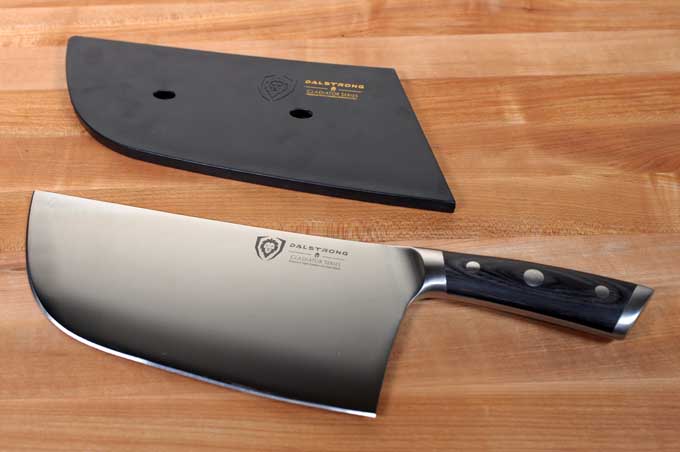Top 5 Tips on How To Use A Meat Cleaver
Meat cleavers are a quintessential kitchen necessity. However, many people stay clear of using meat cleavers due to a lack of knowledge of how to use it safely and effectively. So we present to you 5 useful tips that will help you use this versatile chef’s tool to its fullest capacity.

Meat cleaver
Here are 5 tips about using a meat cleaver
Tip 1: Holding the cleaver
To use the meat cleaver correctly, it is essential to hold it properly. There are 2 ways in which you can hold the cleaver:
The 1st grip
Clutch the part of the handle that is nearest to the blade. Then put your thumb on one side of the cleaver and curl the remaining four fingers on the other side.
The 2nd grip
Hold the part of the handle that is closest to the blade. Now place your index finger on one side of the blade and your thumb on the other side. Curl the remaining fingers around the handle.
Several professional chefs use the 2nd grip technique of holding the meat cleaver as it provides more control.
Tip 2: Use a sturdy board
While setting up the chopping board, ensure that it is durable. Moreover, place it on a stable surface. We highly recommend placing a gripper mat under the board to prevent the board from slipping.
Tip 3: Think about the food
Hacking the food with a cleaver is not always the best course of action. Instead, use the cleaver according to the type of food you are about to chop. For example, if you wish to cut a whole roast duck into half, employ a gentle rocking motion to break it down.
Tip 4: Select the right grip
Choose the 1st grip if you do not need to cut things intricately. 1st grip is ideal for chopping bones or vegetables for a stock. On the other hand, if you want to cut poultry or meat, it is better to use the 2nd grip. Additionally, use your non-dominant hand to stabilize it.
Tip 5: Cut wisely
Once you have decided the right grip, it is time to cut. Instead of exerting too much force to hack the meat, use the cleaver’s weight to do the work.
While cutting, engage your wrist in the chopping motion. Start by lifting your arm and bring it down over the food you want to cut. Then use your wrist to direct the cleaver and apply force as required.
If you are using a wooden cutting board, make sure to cut the food perpendicularly or at a slight angle. This way, you can avoid splitting the board. In case, the cleaver gets stuck on the bone, place your non-dominant hand on the spine of the cleaver and apply sufficient pressure to drive it downwards and finish the job.
Popular questions about meat cleaver
There are many questions people have regarding a meat cleaver. Continue to read to find answers to some of the most frequently asked questions about this handy kitchen tool.
Q1.Why is there a hole in a meat cleaver?
Due to the blade’s size and shape, it is hard to fit meat cleavers in knife blocks or kitchen drawers. The hole allows users to hang it on a nail or a hook conveniently.
Q2.Can a meat cleaver cut through bone?
While it is possible to cut through poultry bones, it is not recommended to use meat cleavers to cut solid bones. Using a bone saw is more appropriate for the task.
Q3. Should a meat cleaver be sharp?
The blade of a meat cleaver need not be razor-sharp. This is mainly because its effectiveness depends on the weight of the cleaver and force exerted by the user to swing it.
Q4. Why do Chinese chefs use cleavers?
Chinese food preparation involves a significant amount of slicing. As the Chinese cleavers are versatile and can make a wide variety of cuts, it is very popular among Chinese chefs.
Q5. How to know if your knife is 15 or 20 degrees?
One of the quickest ways to decipher this information is by reading the manufacturer’s documents or checking their website. If you wish to figure it out yourself, draw an imaginary line with a marker through the middle of the blade and then measure the angle from there to the outer part of the knife’s primary bevel.
Conclusion
To get good cuts of meat, poultry, or vegetables, it is crucial to use the meat cleaver appropriately. Follow the above tips to use the cleaver confidently. While it may take some practice to master the correct technique, a meat cleaver is a star tool in any professional chef or serious home cook’s toolkit.
References
cleavers- https://en.wikipedia.org/wiki/Cleaver

